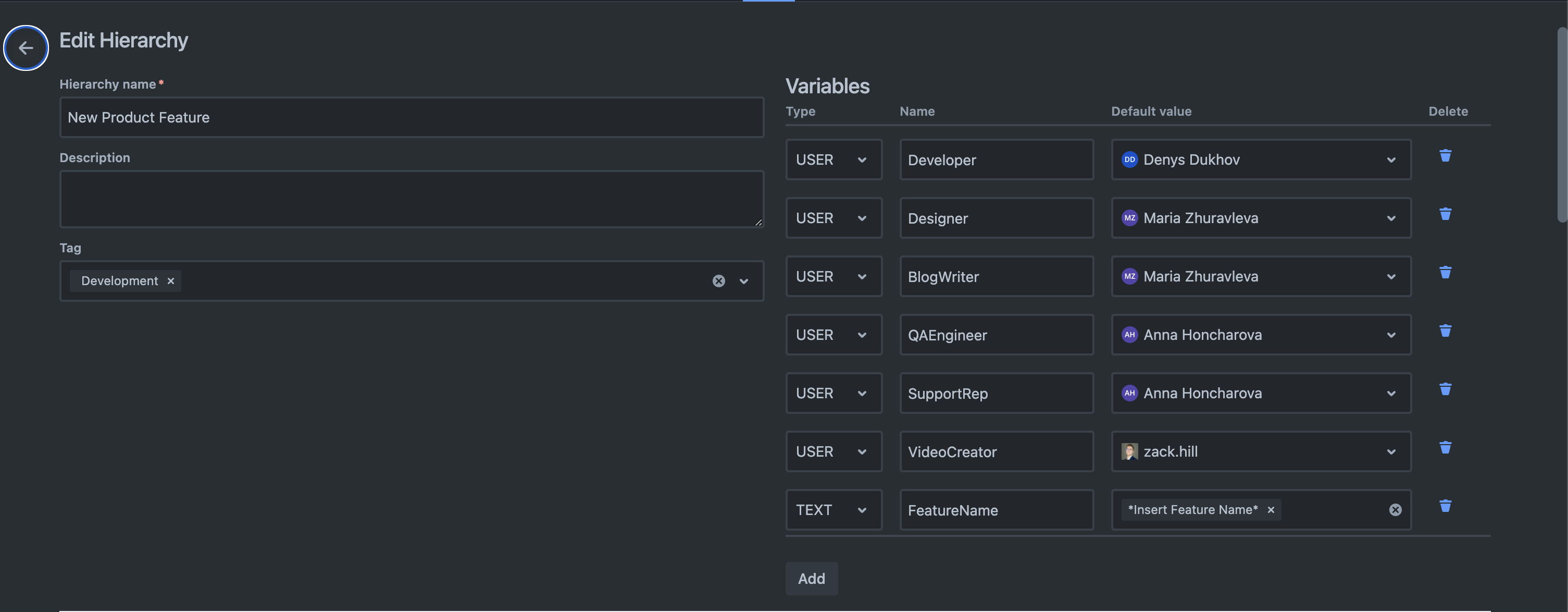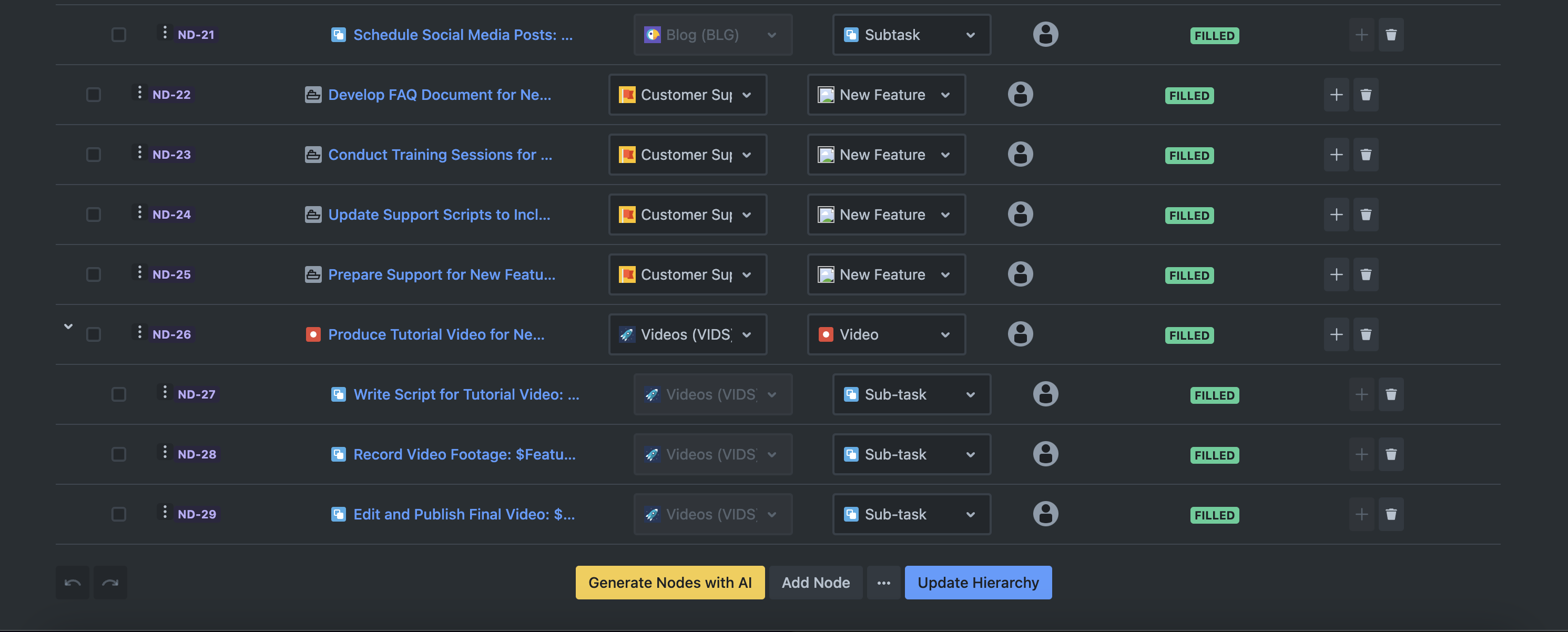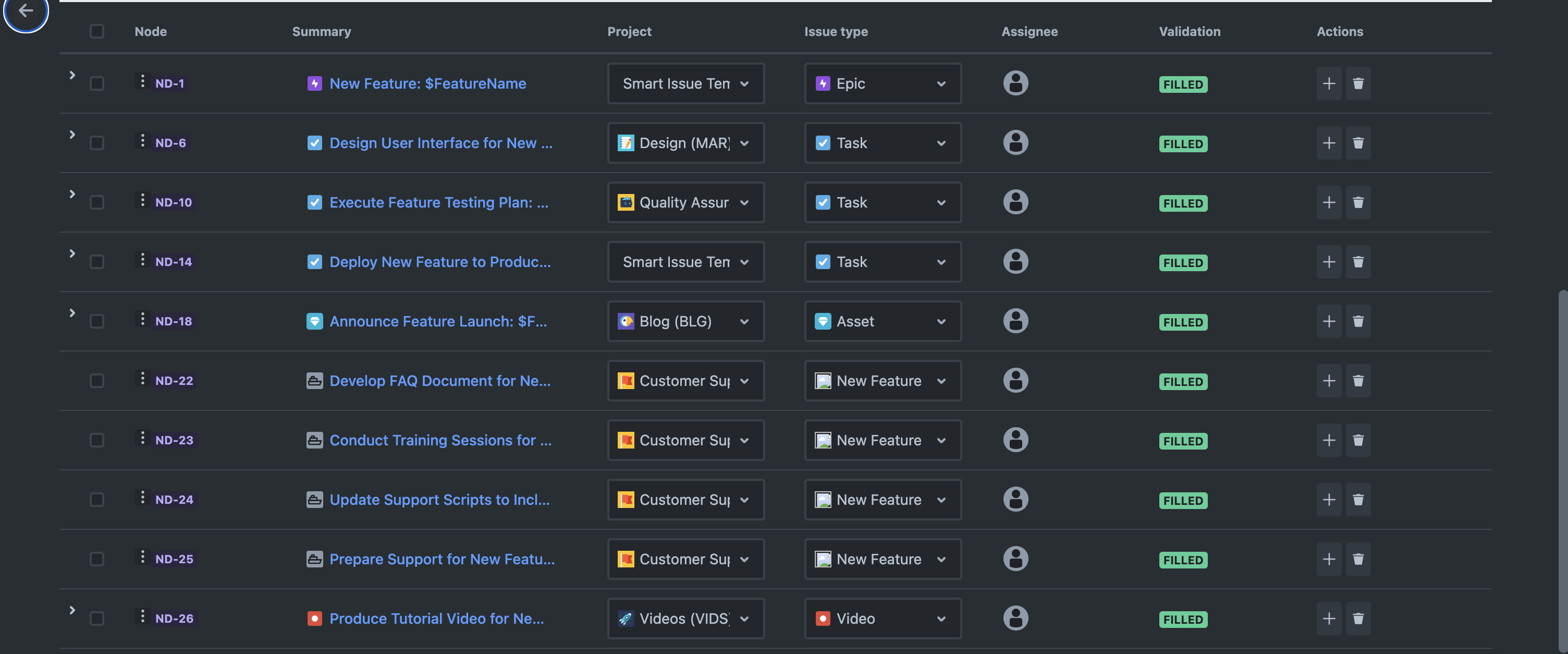New Product Feature Process
Who can use this Hierarchy?
This hierarchy is designed to facilitate the management of new product feature launches, streamlining the collaboration across development, design, quality assurance, marketing, and customer support teams.
Roles
Developers
Marketers
Customer Support Reps
QA Engineers
Video Creators
Departments
Software Engineering
Marketing
Quality Assurance
Customer Support
Industry
SaaS & Technology
Demonstration Video
Description of the Hierarchy
This document outlines a comprehensive framework for managing the lifecycle of a new product feature, from inception through to launch and support, utilizing Smart Issue Templates for Jira. This setup is designed to enhance coordination and efficiency across multiple teams within an organization.
Framework Purpose:
The aim of this framework is to streamline the process of launching new product features, leveraging Smart Issue Templates for Jira to automate tasks and facilitate collaboration across departments.
Main Components and Workflow:
Roles and Responsibilities
1. Developer (Development Team Member)
Responsibilities: Focus on the technical development of the new feature, including coding, system integration, and deployment. Developers work closely with designers to ensure the feature's functionality aligns with the user experience design.
Contribution to the Project: Implement the core functionality of the new feature, ensuring it is robust, scalable, and meets all technical requirements.
2. Designer (Design Team Member)
Responsibilities: Design the user interface and experience for the new feature, ensuring it is intuitive, engaging, and accessible. Designers collaborate with developers to align the design with technical implementation.
Contribution to the Project: Create visual designs, interactive prototypes, and user experience flows that guide the development of the feature.
3. Blog Writer (Marketing Team Member)
Responsibilities: Develop content to promote the new feature, including blog posts, website content, and press releases. The Blog Writer plays a key role in communicating the value and functionality of the new feature to the user base.
Contribution to the Project: Craft compelling narratives that highlight the benefits of the new feature, driving user interest and adoption.
4. QA Engineer (Quality Assurance Team Member)
Responsibilities: Conduct thorough testing of the new feature, identifying bugs and issues that need resolution before launch. QA Engineers ensure the feature meets all quality standards and provides a seamless user experience.
Contribution to the Project: Ensure the new feature is of high quality, free of critical bugs, and ready for deployment to users.
5. Support Representative (Customer Support Team Member)
Responsibilities: Prepare to support the new feature by developing knowledge bases, FAQs, and training materials for both support staff and users. Support Representatives are the first point of contact for users needing assistance with the new feature.
Contribution to the Project: Provide essential support to users, ensuring they can effectively utilize the new feature and have a positive experience.
6. Video Creator (Content Creation Team Member)
Responsibilities: Produce engaging and informative video content that explains the functionality and benefits of the new feature. This includes tutorial videos, feature overviews, and promotional content.
Contribution to the Project: Create visual content that enhances user understanding and engagement with the new feature, encouraging adoption and utilization.
Supporting Infrastructure
Confluence Integration: A dedicated Confluence space is utilized for comprehensive documentation of the feature development process, testing outcomes, marketing strategies, and support materials.
Variable Inputs: The use of templated tasks with variable fields such as “FeatureName” helps in customizing the workflow for each new feature, enhancing efficiency and clarity.
Application Across Projects:
The framework is applied across a range of projects—Development, Design, Quality Assurance, Marketing, Customer Support—each addressing specific aspects of the feature launch process. This ensures a structured and systematic approach, promoting clear communication and collaboration across teams.
Outcome and Benefits
Implementing this hierarchy for new product feature launches transforms the approach to project management, enabling more organized, efficient, and collaborative processes. By defining clear roles, automating repetitive tasks, and ensuring thorough documentation and communication, organizations can accelerate time-to-market for new features while maintaining high quality and customer satisfaction.
Hierarchy Structure
Download and Import the Hierarchy
Download the file below, go the manage hierarchies screen, and click import to use the hierarchy.

Example
.png)




